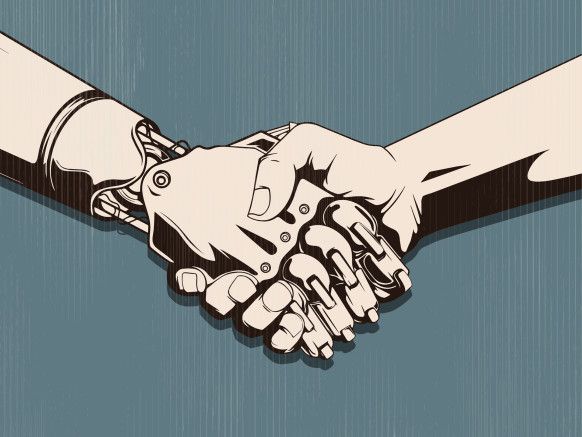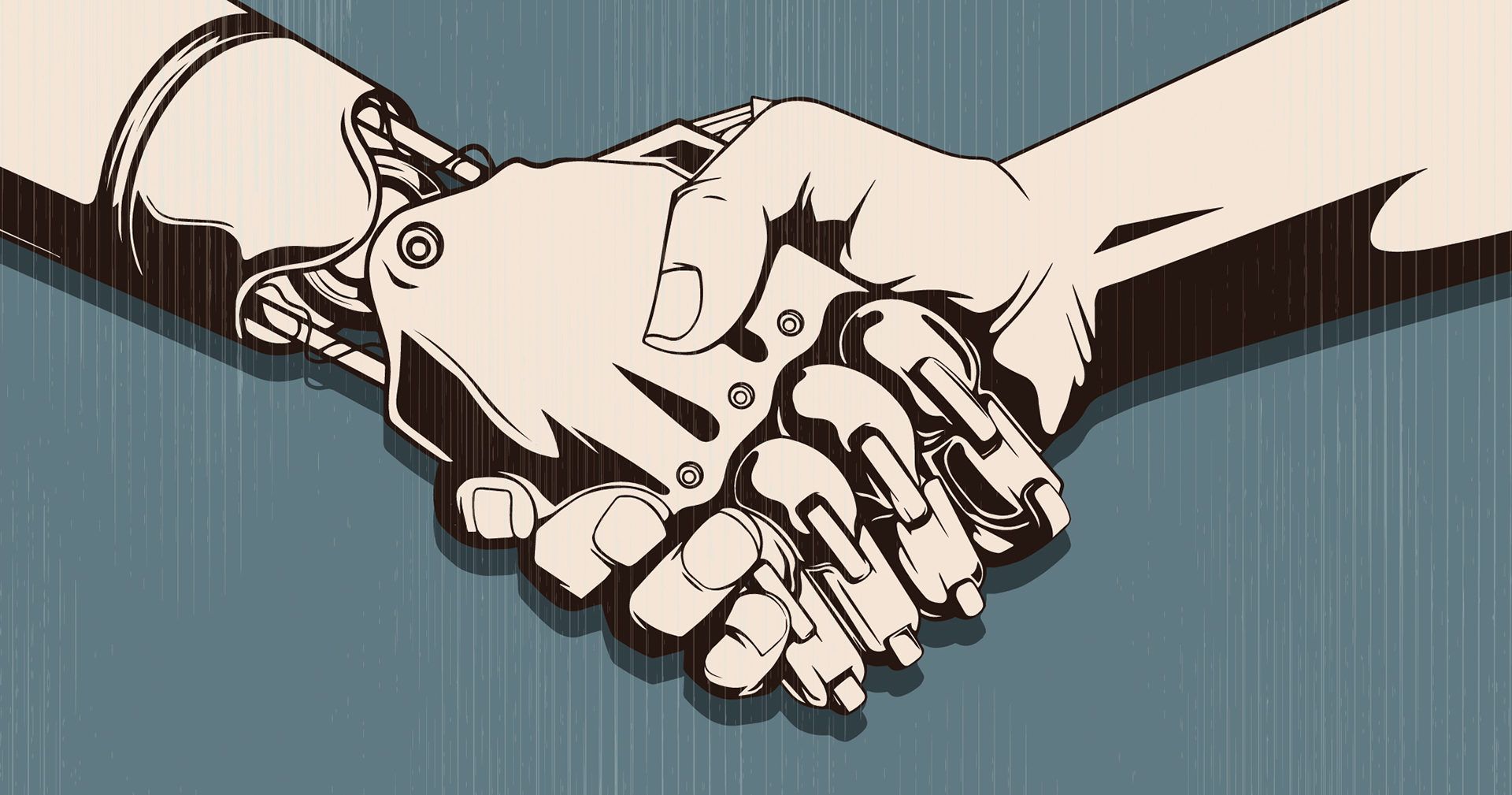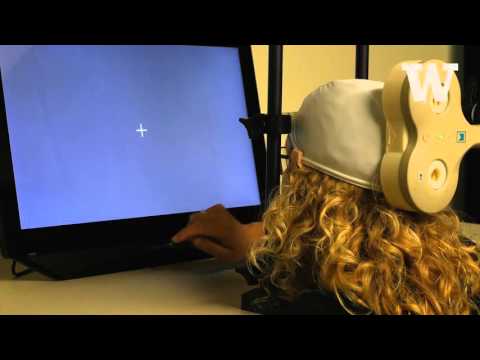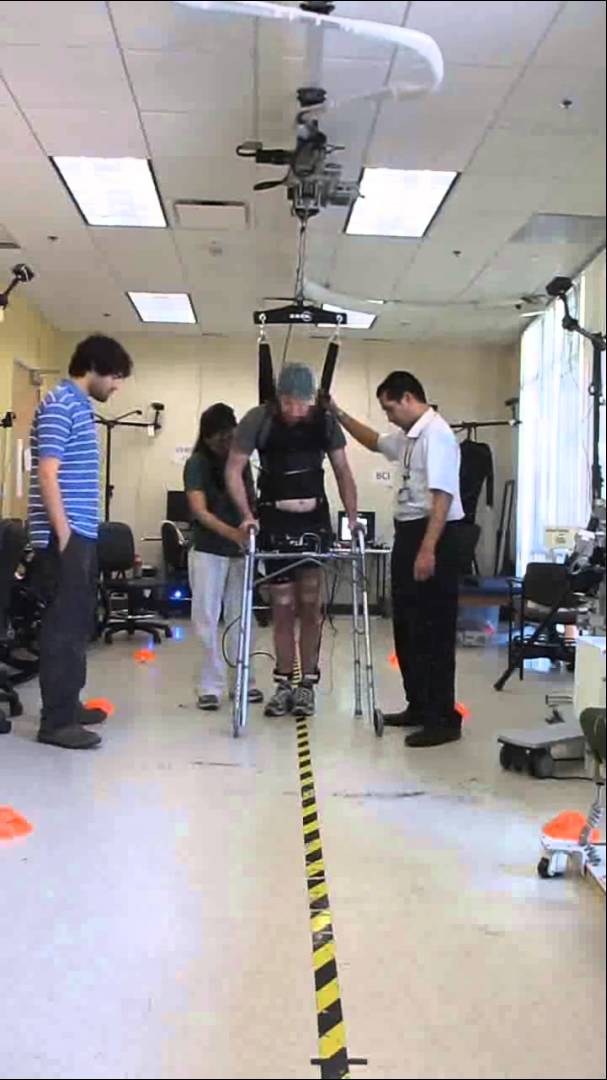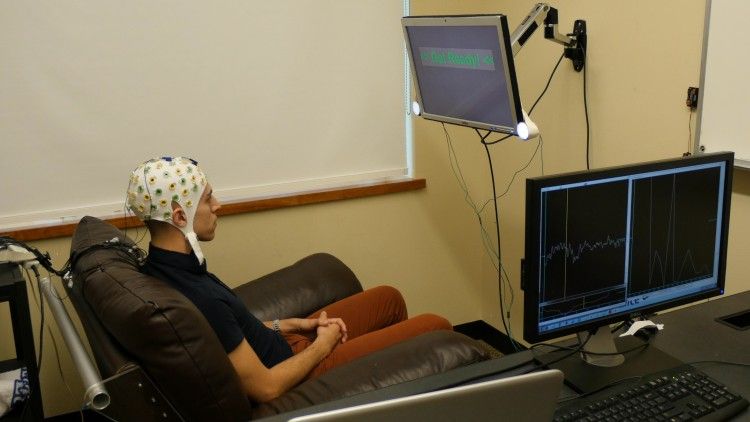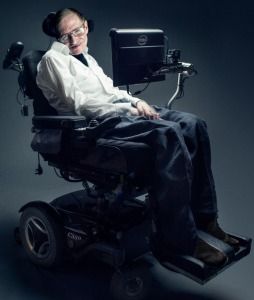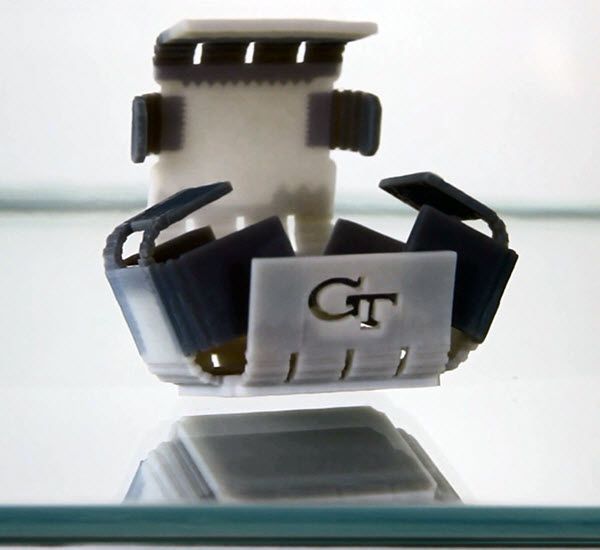“I signed up for Clara last week.”
Artificial intelligence has come a long way. But as virtual digital assistants proliferate, they often need a non-digital assist.
University of Washington graduate student Jose Ceballos wears an electroencephalography (EEG) cap that records brain activity and sends a response to a second participant over the Internet (credit: University of Washington)
The first brain-to-brain telepathy-like communication between two participants via the Internet has been performed by University of Washington researchers.
Prevalence of Self-Reported Obesity Among U.S. Adults by State and Territory, BRFSS, 2014 (credit: Behavorial Risk Factor Surveillance System/CDC)
A molecule known as MnTBAP has rapidly reversed obesity in mice and could be effective for humans in the future, according to researchers from Skidmore College and the Perelman School of Medicine at the University of Pennsylvania.
A paraplegic man who was paralysed for five years has walked again on his own two feet, thanks to a new kind of brain-computer interface that can reroute his thoughts to his legs, bypassing his spinal cord entirely.
The anonymous man, who experiences complete paralysis in both legs due to a severe spinal cord injury (SCI), is the first such patient to demonstrate that brain-controlled overground walking after paraplegia due to SCI is feasible.
“Even after years of paralysis, the brain can still generate robust brain waves that can be harnessed to enable basic walking,” one of the researchers, Zoran Nenadic from the University of California, Irvine in the US, said in a press release. “We showed that you can restore intuitive, brain-controlled walking after a complete spinal cord injury.”
The past few years have been marked by the proliferation of lab-grown organs, including limbs, livers, skin, heart tissue, and yep, even penises. But piecing together an organ, cell-by-cell, in a way that resembles the real thing is only half the challenge — you’ve actually got to make it work as part of several incredibly complex systems in a living, breathing organism. And that’s where most attempts fall flat.
But researchers in Japan have managed to grow fully functioning kidneys in the lab, and when transplanted into pigs and rats, they filtered out urine just like a natural kidney. Built using stem cells that had been extracted and then incubated in the animal recipients, the kidneys point to the possibility of lab-grown kidneys for humans in the future.
Led by Takashi Yokoo from the Jikei University School of Medicine in Tokyo, the team figured out how to overcome a challenge they’d faced previously with these lab-grown kidneys: they were good at processing urine, but instead of passing it into the natural ureter, they ballooned dangerously under the pressure.
Next January Stephen Hawking will be 74 years old. He has lived much longer than most individuals with his debilitating condition. In addition to being an unquestionably gifted cosmologist, he has invited controversy by supporting the pro-Palestinian, Israel-BDS boycott and warning about the dangers of alien invaders who tap into our interstellar greetings
Antisemitism, notwithstanding, this man is a mental giant. He is Leonardo. He is Einstein. Like them, his discoveries and theories will echo for generations beyond his life on earth. He is that genius.
Forty years ago, when Stephen Hawking still had mobility, he delivered a paper on a mystery regarding information-loss for entities that cross the event boundary of a black hole.
In the mid 1970s, Astronomers were just discovering black holes and tossing about various theories about the event horizon and its effect on the surrounding space-time. Many individuals still considered black holes to be theoretical. Hawking’s analysis of the information paradox seemed extremely esoteric. Yet, last month (Aug 2015) , at Sweeden’s KTH Royal Institute of Technology, Hawking presented a possible solution to the paradox that he sparked.
I can barely understand the issue and cannot articulately rephrase the problem. But my interest in the black hole event horizon takes a back seat to my interest in the amazing tool created to compensate for the famous cosmologist’s handicap. Watch closely as Stephen Hawking offers a new theory that provides a possible explanation for the paradox.
Near the end of the video (beginning at 7:22), the camera begins a steady zoom up to Hawking’s face. Unlike a year ago, when he could still smile at a joke or move his eyes, he now appears completely motionless. Throughout his speech, there is no sense of animation—not even a twitch—with or without purpose. His eyebrow doesn’t move, his fingers are not restless, he doesn’t blink anymore.
So, how, then, does Hawking speak with normal cadence and just a short delay between sentences? (If we assume that his computer adds emphasis without additional effort, I estimate that his ASCII communications rate is roughly equivalent to a 1200-baud modem, circa 1980). Yet, clearly, there must be a muscular conduit between thought and speech. How is it that his thoughts are converted to speech at almost the same rate as someone who is not paralyzed?
That magic is enabled by a tiny camera that monitors a slowly deteriorating cheek muscle. It is Hawking’s last connection to the outside world. What began as index cards with words and then an Apple II computer, has evolved into a sophisticated upgrade process involving cutting edge analysis of the professor’s slightest tick combined with sophisticated computing algorithms. The camera and software that interprets this microscopic Morse code is tied to a process that optimizes options for successive words and phrases. He is actually communicating at far less than 1200 baud, because—like a court stenographer—he employs shorthand and Huffman encoding to compress words and phrases into his twitch pipeline. Drawing on a powerful processor and connected to the Web, his gear is constantly upgraded by a specialized Intel design team.  They are engaged in a race to offer Hawking the potential for communication up until he has no capacity for interaction at all.
They are engaged in a race to offer Hawking the potential for communication up until he has no capacity for interaction at all.
In a recent documentary by Hawking himself,* he laments the likely day when he will no longer have any capacity for output at all. No ability to discuss physics and cosmology; no way to say “I need help” or “I love you”; no way to show any sign of cognition. At that time, he reflects, the outside world will no longer be certain that there is anything going on behind his blank stare. They will never really know when or if he wants them to pull the plug. Even more mind boggling, humanity will never know what secrets his brilliant mind has unlocked to mysteries of the cosmos.
* Referring to his 2013 autobiographical film and not the 2014 feature film about his life, Theory of Everything.
Philip Raymond is CEO and Co-Chair of CRYPSA,
The Cryptocurrency Standards Association.
This image shows the self-folding process of smart shape-memory materials with slightly different responses to heat. Using materials that fold at slightly different rates ensures that the components do not interfere with one another during the process. (credit: Qi Laboratory)
Using components made from smart shape-memory materials (which can return to their original shape) with slightly different responses to heat, researchers have demonstrated a “four-dimensional” printing technology that allows for creating complex, self-folding structures.
